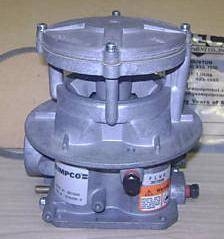
Cars and trucks that have a gasoline burning combustion engine can be converted to run on propane gas with the help of aftermarket propane kits. Converting a car to run on propane will save money and produce less pollution. Propane is widely used by government agencies to run fleets of service and utility vehicles because of these cost savings and environmental benefits. To convert a car into a propane burning power plant instead of gasoline burning polluter, you will need at least five important components to create a propane conversion kit for any gasoline powered combustion engine.
Measure the vehicle for system placement of tank, converter, primer switch and jets. Keep these measurements handy when purchasing the parts you will need to buy to make a complete propane kit for a car: the distance from tank to regulator, regulator to intake manifold, water hose or heat hose to regulator and primer switch to regulator. These distances will give you the length of wire and hose you need to complete the vehicle propane conversion kit.
Purchase the propane tank, demand regulator, tank brackets and rubber fuel hose from a propane supply company. The most common tank for this project would be either 8- or 10-pound tanks that come with a pressure gauge included in the release valve. The Impco demand regulator will be found at a business that specializes in propane parts and products, and the proper gas converter is necessary for the propane kit to work properly.
Measure and buy the wire and toggle switch from a hardware store. You can use a doorbell switch to work in place of the toggle switch. This on/off type depression switch will be used for the priming of the propane kit. With the switch, the propane system will pre-load with fuel before starting the engine, preventing the damage that results from "cold" starts with gasoline that damages metal parts before ignition.
Visit the local performance shop to find the aluminum or copper tubing, fittings for hoses, reducer fittings for the converter heater, hose clamps and tie straps. The performance shop will also have specialty parts you may want to include or need to have for your installation. Some kits must tap into the carburetor or intake manifold to introduce the propane into the combustion chamber. Find the injection jets and tools to tap the threaded inlets for the propane jets here.
Package the parts together in plastic bags or boxes that are clearly marked. Having the propane kit for a car clearly marked will help in assembling the propane kit later. Complete a mock-up drawing of the propane kit for the vehicle it is intended for. List and locate the important parts and the assembly instructions included. Package the complete kit in a box for shipment without the tank (It is illegal to ship propane tanks). The kit is ready to be used to convert a car into a propane burning, clean running machine.